This article was originally posted on May 27, 2010
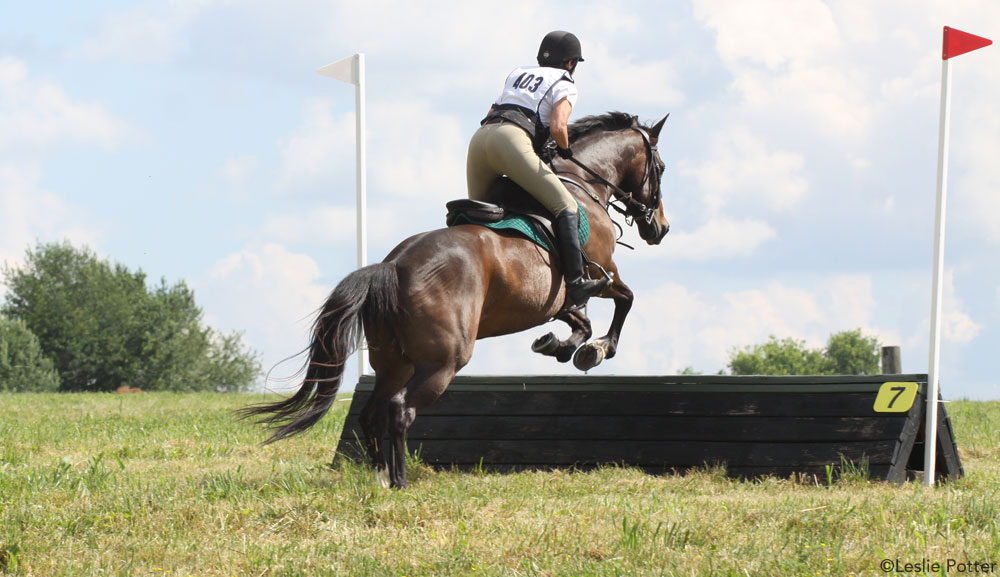
Introduction to Eventing
The lowest eventing level offered at United States Eventing Association (USEA)-recognized horse trials is Beginner Novice, usually held in a two-day format. Solid fences at this level can be up to 2 feet, 7 inches high; however, many fences are smaller than the maximum.
Unrecognized mini-trials are available in some areas and are usually held in a one-day format. They frequently have a starter division with a 2-foot maximum fence height and a green division that is even smaller.
Before you try a recognized horse trial or mini-trial, you will need to practice a dressage test and stadium jumping, both of which can easily be done in the ring. But what about the cross-country obstacles?
Here are a few jumps you may see at competitions that can be simulated in a ring or field.
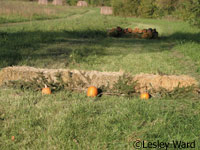 Hay Bales
Hay Bales
Even at the lowest levels of competition, your horse will need to become accustomed to jumping something solid. Horses that have spent years packing around the hunter or jumper ring can suddenly become spooky when faced with obstacles that are entirely new and much more imposing. Be sure your horse has a chance to school these solid jumps at home first.
One very friendly and inviting way to prepare your horse for solid jumps is to start with hay or straw bales. These are available at most barns, or can be purchased inexpensively. Place three or four bales side by side in a row, either laid flat or turned up on their sides for a slightly higher fence. Let your horse check out the jump if he seems wary or spooky when first walking around the new obstacle. When he relaxes, pick up a forward trot and keep your leg on up to the base of the fence. Approach the jump from both directions at a trot and then at a canter if you are comfortable. You may stack two rows of bales, laid flat, if you want to try something a little higher and wider.
To jazz up the jump like something you would see at a show, try laying a few boughs of leafy or evergreen branches at the base of the obstacle. Other common show decorations include pots of flowers, pumpkins and stuffed animals. Try changing the décor to something new and unexpected if your horse gets bored with the same jump.
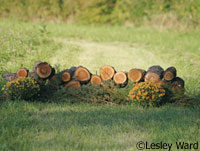 Log Pile
Log Pile
Your horse will also need to understand that solid fences won’t come down with a mere tap. He needs to give a good jumping effort every time. If you have, or can buy, a little stack of firewood, make an approximately 8- to 12-foot-wide inviting jump about 2 feet high. The logs will come down if your horse hits them, but they aren’t as soft as the bales. Jump the log pile in both directions until your horse is relaxed and comfortable with the task.
Ditch
A ditch on a cross-country course can be anything from a natural scoop in the earth to a deep, square chasm up to 4 feet wide (at the Beginner Novice level). Most horses are hesitant to jump ditches if they haven’t seen them before, so it’s very important to school your horse over ditches at home.
Start out by purchasing a brown tarp. Fold it lengthwise until it is only about 2 feet wide. Lay a jump pole on each long side to hold it down. This will be almost indistinguishable from a real ditch to your horse’s eyes.
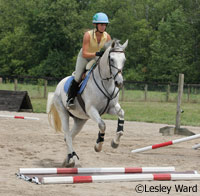 Let your horse walk slowly around the “ditch” and inspect it before you attempt to jump. Approach the middle of the tarp at a trot on a straight line, with your leg supporting your horse all the way to the obstacle. Remain back with your upper body and stay centered in the tack. This position will keep you in the saddle should your horse come to a sudden stop. Fortunately, he can easily jump this obstacle from a standstill, which should be encouraged, as he’ll see that there’s nothing to be afraid of. Praise your horse when he clears the ditch, both verbally and with lots of pats, and continue to jump it until he is comfortable.
Let your horse walk slowly around the “ditch” and inspect it before you attempt to jump. Approach the middle of the tarp at a trot on a straight line, with your leg supporting your horse all the way to the obstacle. Remain back with your upper body and stay centered in the tack. This position will keep you in the saddle should your horse come to a sudden stop. Fortunately, he can easily jump this obstacle from a standstill, which should be encouraged, as he’ll see that there’s nothing to be afraid of. Praise your horse when he clears the ditch, both verbally and with lots of pats, and continue to jump it until he is comfortable.
Corner
A more difficult type of obstacle is the corner, which is not encountered on-course until the upper levels. As the name implies, it is wide at one end and comes to a narrow corner at the other, forming a wedge or triangle shape. The challenge is to not jump the widest point. However, you also don’t want your horse to glance off the narrow side, since it is very easy to have a run-out if your horse has second thoughts.
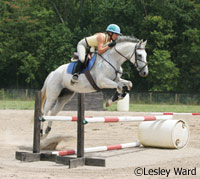 Even though you probably won’t see a dramatic corner at the lower levels, it is good practice to school them, since the mental challenge will make for a stronger partnership between you and your horse.
Even though you probably won’t see a dramatic corner at the lower levels, it is good practice to school them, since the mental challenge will make for a stronger partnership between you and your horse.
Start out with a corner that is fairly narrow all the way across. Set up two jump standards next to each other, about 2 feet apart, with a rail in each cup about 2 feet off the ground. Instead of setting additional standards opposite the first two and forming an oxer, place the other ends of the poles so they meet on top of a hay bale or a barrel turned on its side. The rails of the jump should be parallel to the ground. Since this jump isn’t dramatically wider at the end with the standards, aim to jump directly across the middle. Because the end with the barrel or bale has no standard guiding the horse to the middle, it will still present the challenge of not running out. Jump the corner in both directions to test your control of your horse’s shoulder on each side.
Skinny
A skinny is a very narrow jump. These are also not seen until higher levels of eventing, but learning to jump them is a good exercise in finesse and precision steering. If you only jump 30-foot wide telephone poles on cross-country courses, it’s easy to stop paying attention and forget to ride your horse to each fence. A jump with a narrow face requires your complete concentration and best riding effort.
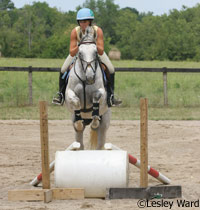 Begin by laying a single barrel on its side. You can put a jump standard at each end to guide your horse down the middle. A horse may initially feel constricted and not want to jump between the standards. You too may feel that your feet are going to hit them if you’re not careful! Another measure you can take to guide your horse down the center and avoid run-outs is to set up “wings” constructed with jump poles, either at the top of the barrel or the tops of the standards. These will discourage your horse from ducking out at the last second. It’s also less claustrophobic to have shorter standards (3 or 4 feet high instead of the normal 5 feet or taller).
Begin by laying a single barrel on its side. You can put a jump standard at each end to guide your horse down the middle. A horse may initially feel constricted and not want to jump between the standards. You too may feel that your feet are going to hit them if you’re not careful! Another measure you can take to guide your horse down the center and avoid run-outs is to set up “wings” constructed with jump poles, either at the top of the barrel or the tops of the standards. These will discourage your horse from ducking out at the last second. It’s also less claustrophobic to have shorter standards (3 or 4 feet high instead of the normal 5 feet or taller).
Horses are naturally afraid of squeezing through small spaces, so your mount’s trust in you will be tested. If he has a refusal, don’t be discouraged—continue to approach the skinny at a forward trot with lots of leg right up to the base of the fence. It should be low enough for him to pop over from a standstill the first time if need be. Give him lots of praise when he completes the task. Eventually you can take away the wings. If you want to really test your horse’s honesty, try taking away the jump standards and jump the single barrel lying on its side.
If your horse can jump the skinny fence and all of the other exercises outlined above, he will be much more mentally prepared for a cross-country competition.
Further Reading
Cross Country Prerequisistes
Jumping Cross Country Obstacles
Special thanks to Megan Lynn and I’ve Got the Rhythm for demonstrating these exercises. The pair won two USEA-recognized horse trials at the Preliminary level in 2008.
This article originally appeared in the February 2009 issue of Horse Illustrated magazine. Click here to subscribe!

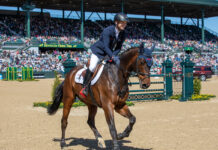
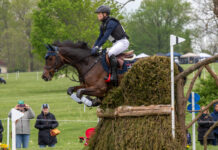
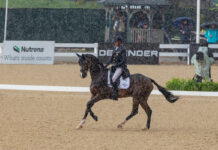
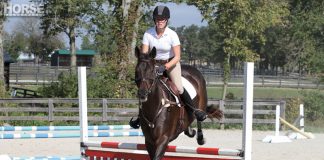

Great ideas for starting. What about water jumps? I’ve actually never ridden a horse that didn’t prefer a solid jump. Perhaps that’s because I personally prefer them. But water? Aahhh! And that’s not me but my horse!
Good ideas for just starting out!